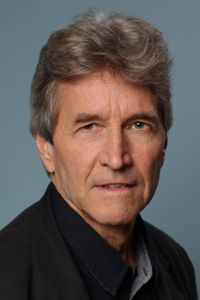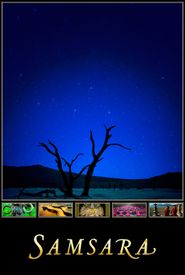Ron Fricke is an exceptionally accomplished American film director and cinematographer, widely recognized for his extraordinary mastery of time-lapse photography and large format cinematography.
In the year 1992, the visionary filmmaker Ron Fricke took the cinematic world by storm with the release of his groundbreaking feature film, Baraka, a pioneering work that defied conventional narrative structures and eschewed dialogue altogether. This extraordinary achievement was made possible by Fricke's meticulous design and construction of his own 65 mm camera equipment, a feat he would repeat in his subsequent projects.
Fricke's innovative approach to filmmaking was already evident in his earlier work, particularly in the IMAX films Chronos, released in 1985, and Sacred Site, which followed in 1986. These films showcased Fricke's mastery of the medium, as he pushed the boundaries of what was possible with large-format cameras and storytelling.
---
Ron Fricke is a renowned American filmmaker and cinematographer, best known for his work on the groundbreaking feature film Baraka, released in 1992. Born in San Francisco, California, Fricke began his career in the film industry in the 1970s, working as a camera operator and assistant director on various projects.
Fricke's early work in the 1980s included the IMAX films Chronos and Sacred Site, which showcased his innovative approach to filmmaking and his ability to push the boundaries of the medium. These films were followed by the release of Baraka, a non-verbal and non-narrative feature film that has since become a classic of the genre.
Throughout his career, Fricke has been recognized for his innovative approach to filmmaking and his mastery of large-format cameras. He has received numerous awards and accolades for his work, including several Academy Award nominations. Despite his success, Fricke remains committed to pushing the boundaries of the medium and exploring new ways to tell stories through film.
Fricke's most recent professional endeavour was to serve as a cinematographer for a significant portion of the critically acclaimed film, Star Wars Episode III: Revenge of the Sith.
As Fricke himself recounts, his creative endeavors have undergone a profound metamorphosis throughout his ventures, with Koyaanisqatsi, Chronos, and Baraka serving as pivotal milestones in this evolution.
Technological advancements and philosophical introspection have both played a significant role in Fricke's development, positioning him to explore his most cherished theme - humanity's intricate connection with the eternal - with even greater depth and nuance.
In his own words, Fricke's work has undergone a remarkable transformation, with Koyaanisqatsi, Chronos, and Baraka representing key junctures in this ongoing process of growth and exploration.
Fricke's ability to balance technical innovations with philosophical insights has enabled him to build upon his existing body of work, allowing him to further probe the complex dynamics between humanity and the eternal.























